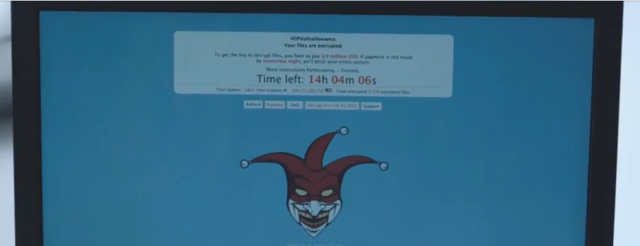 Benq hat mit dem GS1 einen kleinen LED-Beamer vorgestellt, der mit einem wasserfesten Gehäuse und einem Akku auch im Freien eingesetzt werden kann. Mit 300 Ansi-Lumen ist er allerdings nicht besonders lichtstark. (Beamer, Heimkino)
Benq hat mit dem GS1 einen kleinen LED-Beamer vorgestellt, der mit einem wasserfesten Gehäuse und einem Akku auch im Freien eingesetzt werden kann. Mit 300 Ansi-Lumen ist er allerdings nicht besonders lichtstark. (Beamer, Heimkino) Category: Uncategorised
Elektroauto: Elektrischer 3er BMW soll gegen Tesla Model 3 bestehen
Der neue 3er BMW soll 2017 auf den Markt kommen und auch in einer rein elektrischen Version angeboten werden. Das Auto soll dem Tesla Model 3 Konkurrenz machen. (Elektroauto, GreenIT)
 Der neue 3er BMW soll 2017 auf den Markt kommen und auch in einer rein elektrischen Version angeboten werden. Das Auto soll dem Tesla Model 3 Konkurrenz machen. (Elektroauto, GreenIT)
Der neue 3er BMW soll 2017 auf den Markt kommen und auch in einer rein elektrischen Version angeboten werden. Das Auto soll dem Tesla Model 3 Konkurrenz machen. (Elektroauto, GreenIT) Meet Olli, the autonomous electric people mover from Local Motors
The open source car company has set up shop in National Harbor, Maryland.
Jonathan Gitlin
This is Olli. It uses 3D printing and is self-driving at speeds of 12-18mph with a 60-mile range.
7 more images in gallery
Local Motors is not your regular car company. It's been pioneering the use of open source development to design its vehicles, starting with the Rally Fighter off-road sports car and a number of vehicles that have been the result of competitions, including one held in conjunction with the Department of Energy's ARPA-E. Most recently, the company unveiled Olli, its first autonomous vehicle. When we discovered that Olli was just up the road in National Harbor, Maryland, we decided it was time to head over there to find out more.
Local Motors has a large retail location at National Harbor (selling merchandise), along with a test lab complete with a gigantic 3D printer for rapid prototyping. Several of the company's designs were also on display—the Strati, which was the first 3D-printed car, as well as the Swim, which was the winning design from its Project Redacted competition. And of course, Olli the autonomous people mover.
As we looked at the Swim, David Woessner, general manager at Local Motors, explained the ongoing process that's expanding Local Motors' product line up. "We started in July of 2015. In September of that year, we did the first print and revealed the car in November. It's the next iteration in our path to a highway car."
After victory at Le Mans, we catch up with Ford to talk about its GT
There was a notable lack of acrimony between Ford and Ferrari post-Le Mans.
6 more images in gallery
Just as it was 50 years ago, the battle for sports car supremacy on the world's race tracks this year has been between Ford and Ferrari. At this year's 24 Hours of Le Mans, the two marques were head-and-shoulders ahead of their competition in the hotly contested GTE-Pro class (for racing versions of cars that you or I could buy). Ford emerged victorious, but the end of the race was somewhat acrimonious, with protests and counter-protests from both camps. We caught up with both teams at their next match up—the Sahlen's Six Hours of the Glen at Watkins Glen in upstate New York—both to check out their machinery and also to find the hatchet well and truly buried.
Back in 1966, after Henry Ford's attempt to buy the Italian car company was rebuffed, his company built the legendary GT40, beating Ferrari's V12-powered cars at Le Mans and most everywhere else. To celebrate the 50th anniversary of that match up, Ford decided to build (and race) a new mid-engined supercar, the Ford GT. The road-legal Ford GT won't actually appear until 2017, but Ford's rivals all gave their permission for the Blue Oval to start racing the car this year—the rules insist on a minimum of 500 production cars built in order to be eligible to race.
Ford has been running a quartet of GTs on track, a pair in the WeatherTech Sportscar Championship here in the US, and another pair contesting the World Endurance Championship. The cars aren't just racing for glory either; Ford Performance (the division of the company responsible for the GT as well as the Shelby GT350 and Focus RS) is using the experience to develop and improve the road car ahead of production. We met with Mark Rushbrook, motorsports engineering manager at Ford Performance, to find out more.
The Google Piracy Blame Game is Headache Inducing
Google published an update to its anti-piracy practices report this week and it was immediately discredited by the record labels who say the company needs to do much more. That’s no surprise, but one has to wonder how much patience Google has left and how long it intends to pander to its critics.
Source: TF, for the latest info on copyright, file-sharing, torrent sites and ANONYMOUS VPN services.
 Music piracy in 2016 is a somewhat curious beast. Streaming platforms are readily accessible and the service provided by outfits like Spotify out-perform the vast majority of pirate sites.
Music piracy in 2016 is a somewhat curious beast. Streaming platforms are readily accessible and the service provided by outfits like Spotify out-perform the vast majority of pirate sites.
With many legitimate platforms providing an ad-supported free tier, it’s even difficult to complain about the price. Still, some people prefer to pirate and this infuriates the labels, and understandably so. Sadly, however, their response is to blame people that have nothing to do with that infringement.
After being put under intense pressure by copyright holders, Google now feels obliged to let everyone know what measures it’s taking against this kind of piracy. This week it produced a comprehensive report covering every possible angle. Within minutes the record labels had responded, not with thanks, but with intence criticism.
On a personal level I’d like to think that Google is now pretty pissed off, and this is coming from someone who supports artists with subscriptions to Spotify, Deezer and Digitally Imported, and purchases from Beatport and Juno.
For the millionth time, Google does not engage in copyright infringement, yet faced with a problem they can’t solve on their own, the labels have adopted a strategy of painting Google as the villain. The contempt shown by the labels for a company that is already going way beyond what’s required of it under the law is quite unbelievable.
The maddening reality of it all really hits home when one reads a piece penned by the BPI’s Geoff Taylor and published in MBW this week. It begins with complaints that Content ID doesn’t work as well as it should and he invites Google to up its game.
“Despite its amazing innovations in mapping the Earth and inventing driverless cars, Google hasn’t managed to implement a Content ID system that people can’t easily get around,” Taylor complains.
First, Google had no obligation to make Content ID at all but it did and now artists are $2bn better off. Second, people invent systems, people get around them, everyone knows that. But apparently, Google is partly to blame for that too.
“Of course the fact that Google refuses to remove YouTube videos that show you exactly how to circumvent Content ID doesn’t help,” Taylor adds.
No, it’s not helpful, but what it does show is that Google isn’t prepared to stifle free speech, even if it does find it objectionable. Talking about circumventing Content ID is not a crime, nor a breach of YouTube’s terms and conditions. Those videos should stay up, no matter how annoying.
Also, it’s worth bearing in mind that when looking at any industry demands, history shows us that whatever is offered, it will never, ever be enough. Taylor’s piece demonstrates that with flying colors.
“Google should concentrate its formidable resources on making a Content ID system that is genuinely effective in protecting creators; and then apply a similar proactive system to Google search and its other services.”
Proactively censor existence of content on the web. Right. That should be both easy and completely problem free.
To be fair, it’s obvious why the music industry wants Google to go down this route, but the thought of any third party becoming permanent judge and jury over what we can and cannot see online is bewildering. And that’s ignoring the fact that Content ID works for material Google hosts. Applying that to content hosted elsewhere would be a minefield, if not impossible.
But it doesn’t stop there. Also bewildering is how the labels are trying to shame Google into paying them more.
“This isn’t strictly a piracy issue, but we can’t ignore the fact that YouTube pays 1/16th as much for each of its music users as competing services like Spotify,” Taylor writes.
“It’s time that Google started sharing a fair proportion of the value it derives from YouTube with creators.”
In any other marketplace people simply don’t do business with a company if they don’t like the prices being paid, but apparently the labels are being held to ransom.
That being said, since we’re playing this game of “fair proportions”, consider this. YouTube makes pretty much no money. Does the BPI want a share of that?
But the complaint that is perhaps the most frustrating is that the BPI and others are still complaining that pirate sites are turning up in search results for music content.
Let’s be clear, the most popular pirate sites do not turn up in the first results because they’re all being downranked by Google’s anti-piracy algorithm. This means that sites that most people have never heard of get pushed up the list, apparently above legitimate offerings.
That raises the preposterous notion that the people behind many of these bottom tier pirate sites have better SEO skills than the world’s biggest music companies. That being the case, someone needs a kick in the ass – and it’s not Google.
Finally, Taylor criticizes Google for not going after sites that rip audio content from YouTube videos and convert them to MP3s.
“Although such sites breach YouTube’s terms of service and seem to contradict its business model – by turning ad-supported transient streams into permanent copies – Google continues to point to these sites in autocomplete and to host YouTube videos showing how to use them,” he writes.
Again, the BPI is asking for censorship of content that simply isn’t illegal. But more than that it’s yet again demanding action from YouTube when it could take action itself. If these sites are illegal, why aren’t they being added to the UK’s national website blocking list, for example?
The problem with this continual assault on Google is that it’s not only tiresome but it largely misses the point. Google already does way more than the law requires yet it only has control over content hosted on YouTube. No matter what actions it takes, it simply cannot remove illicit content from the web, it can only make it a bit less visible.
Google can look after itself, but copyright holders should be extremely cautious of treating its many overtures with this level of contempt. One volunteer is worth ten pressed men and one can only guess at how much patience Google has left.
Source: TF, for the latest info on copyright, file-sharing, torrent sites and ANONYMOUS VPN services.
Microsoft’s Windows RT security patch also stops you from loading Linux
It was big news when Microsoft announced it was working on a version of Windows that would run on tablets with ARM-based processors… but by the time Windows RT actually launched it was a lot less exciting. Devices like the Microsoft Surface and Surface 2 couldn’t run desktop Windows apps and weren’t significantly cheaper than Intel Atom-powered tablets running the full version of Windows, and they didn’t even get better battery life.
So it’s not particularly surprising that Microsoft has largely abandoned Windows RT.

It was big news when Microsoft announced it was working on a version of Windows that would run on tablets with ARM-based processors… but by the time Windows RT actually launched it was a lot less exciting. Devices like the Microsoft Surface and Surface 2 couldn’t run desktop Windows apps and weren’t significantly cheaper than Intel Atom-powered tablets running the full version of Windows, and they didn’t even get better battery life.
So it’s not particularly surprising that Microsoft has largely abandoned Windows RT.
The hack that almost wasn’t: How a pen test led to Mr. Robot’s ransomware
Tanium’s Director of Cybersecurity Andre McGregor talks about being a consultant on S2.

Yes, it's an homage to a famous hacker (nice touch). (credit: USA Networks / NBC Universal)
Warning: This piece contains minor spoilers for this week's episode of Mr. Robot (S2E1)
Near the intermission of Mr. Robot's two-part season two premiere, fsociety hacker Darlene boots her desktop computer and opens up something called the "Social-Engineering Toolkit." She scrolls through a list of options including a "Java Applet Attack" (done through a Remote Administration Tool) then chooses to unleash the "F-Society Cryptowall." Suddenly, tellers and high-level employees at one of the world's most powerful banks all stare at the same screen (above).
Ars readers will recognize this as another instance of art imitating life. And as Mr. Robot's premiere played out, the episode relied on a cryptoransomware story arc that could've been ripped from any number of headlines, including those high-profile Maryland hospital hacks. Similar to that real-life outcome, executives at fictitious E-Corp decide they could come up with the requested $5 million in the couch cushions and eventually pay up (or at least intend to).
Does Snapchat’s Lenses feature violate Illinois’ biometrics law?
2008 law warns “full ramifications of biometric technology are not fully known.”

(credit: Patrik Nygren)
An Illinois man has sued Snapchat for alleged violations of a state law that requires users to expressly consent to instances in which their biometric information is used.
This is the second time a plaintiff has brought such a case under the Illinois Biometric Information Privacy Act (BIPA). Last year, a Chicago man sued Facebook on similar claims.
The proposed class-action lawsuit, known as Jose Martinez v. Snapchat, was originally filed in May 2016 in a Los Angeles County court but was transferred to federal court on Thursday at Snapchat’s behest.
Update für Fire TV: App-Start wird komfortabler
Nexus 5: Juli-Patch macht Probleme bei der Lautstärkeregulierung
Viele Besitzer eines Nexus 5 können die Lautstärke des Smartphones seit dem Juli-Patch nicht mehr ohne Weiteres einstellen. Alles deutet auf einen Fehler im Android-Kernel hin, eine Abhilfe existiert bereits, wenn auch nicht von Google. (Nexus 5, Smartphone)
 Viele Besitzer eines Nexus 5 können die Lautstärke des Smartphones seit dem Juli-Patch nicht mehr ohne Weiteres einstellen. Alles deutet auf einen Fehler im Android-Kernel hin, eine Abhilfe existiert bereits, wenn auch nicht von Google. (Nexus 5, Smartphone)
Viele Besitzer eines Nexus 5 können die Lautstärke des Smartphones seit dem Juli-Patch nicht mehr ohne Weiteres einstellen. Alles deutet auf einen Fehler im Android-Kernel hin, eine Abhilfe existiert bereits, wenn auch nicht von Google. (Nexus 5, Smartphone) 

 Amazon verteilt ein Update für alle Fire-TV-Geräte, um den Start von Apps komfortabler zu gestalten. Vor allem der Wechsel zwischen Apps wird damit noch ein Stück vereinfacht. (
Amazon verteilt ein Update für alle Fire-TV-Geräte, um den Start von Apps komfortabler zu gestalten. Vor allem der Wechsel zwischen Apps wird damit noch ein Stück vereinfacht. (